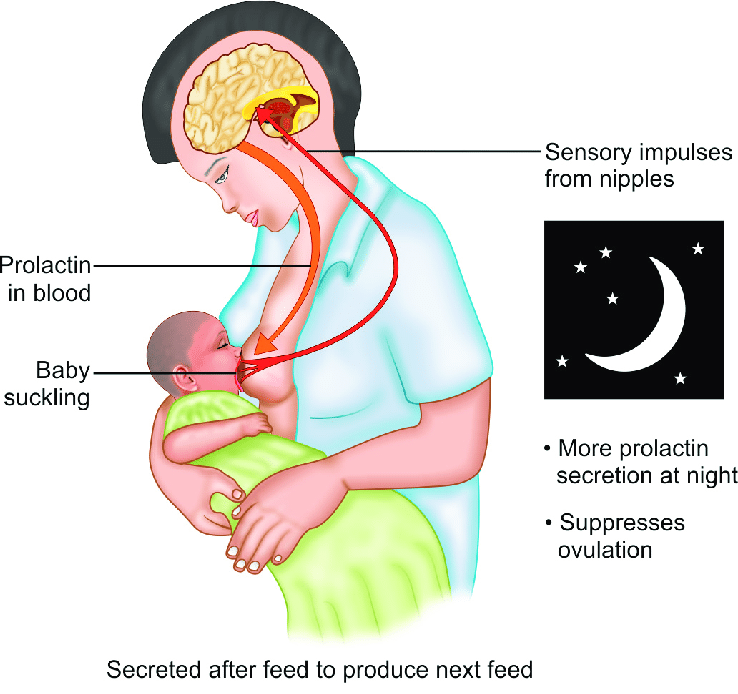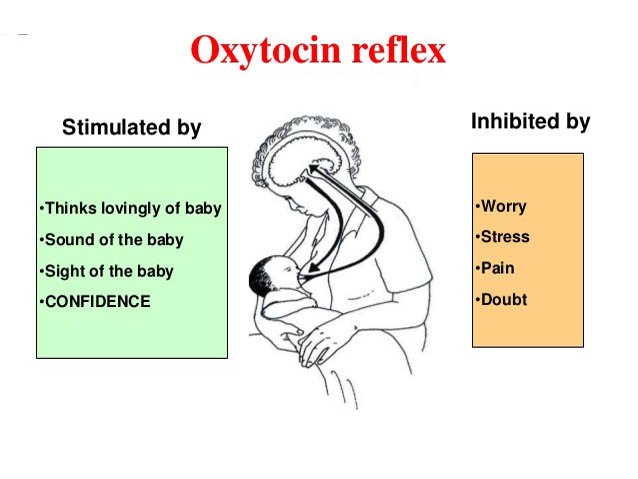HEALTH INFORMATION
Process of Secretion and Ejection
PROCESS OF SECRETION OF MILK
When the baby suckles at the breast, sensory impulses go from the nipple to the brain. In response, thebrain of mother produces the hormone prolactin which goes in the blood to the breast and makes the milk secreting cell produce milk. This process is called as prolactin reflex. Prolactin remains in the blood for about 30 minutes even after the baby finishes the feed. This helps the breast secrete milk for next feed. More prolactin is secreted at night so breastfeeding at night is helpful for keeping up the milk supply i.e continuation of breastfeeding. Prolactin suppresses ovulation so breastfeeding can help birth spacing.

PROCESS OF EJECTION OF MILK
When the baby sucks breast, message go from nipple to the brain. In response, the brain secretes the hormone oxytocin which goes in the blood to the breast and makes the muscle cells around the alveoli contract. This helps the milk flow though the ducts towards nipple. Sometimes milk is ejected in fine streams. This is the oxytocin reflexes or milk ejection reflex. This reflex is under emotional control. Even if mother think lovingly about the baby, touching, smelling, seeing, hearing the baby cry, oxytocin reflex starts working.
However if emotionally disturbed or experiencing pain, discomfort and doubt, the oxytocin reflex doesn’t work well and the baby will have difficulties getting the milk. So, the mother has to be supported to make her physically and emotionally comfortable to make the oxytocin reflex work again and the milk flow.
